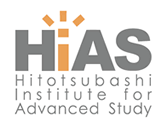Cambodian Refugees
Abstract:
This paper examines the consequences of forced displacement for Cambodian refugees during the Cambodian conflict (1978–1991). Using complete count 1998 Census microdata, we focus on the two major groups of returnees, namely those from the neighboring countries of Thailand and Vietnam, which were under the control of different great powers, respectively Western and Eastern, during the Cold War. The former stayed in refugee camps with humanitarian assistance prior to repatriation and the latter did not. Consistent with the availability of humanitarian assistance, our analyses reveal that the returnees from Thailand attained higher levels of education—while those from Vietnam, by contrast, attained lower levels of education—than stayers. On the other hand, the two groups both experienced worse labor market outcomes, with employment shifts from the primary sector to the immature tertiary sector. Such adverse displacement impacts are relatively stronger for later returnees. We provide suggestive evidence that adverse displacement impacts can be attributed to congested labor markets resulting from limited access to available agricultural land, exacerbated by the high contamination of landmines and UXOs during the conflict. Our results demonstrate that forced displacement due to conflict in a developing country can be a potential source of future misallocation.
| Report No.: | HIAS-E-125 |
|---|---|
| Author(s): | Katsuo Kogure(a), Masahiro Kubo(b) |
| Affiliation: | (a) University of Aizu (b) Brown University |
| Issued Date: | November 2022 |
| Keywords: | conflict, forced displacement, refugees, repatriation, Cambodia. |
| JEL: | O15, J24, D74, N35. |
| Links: | PDF, HERMES-IR,RePEc |











